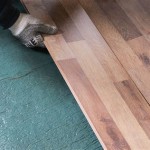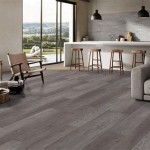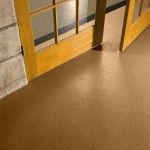Is Vinyl or Laminate Flooring Better for Bathrooms?
Choosing the right flooring for a bathroom can be a challenging task, considering the unique demands of this space. Bathrooms are prone to moisture, humidity, and frequent cleaning, requiring materials that can withstand these conditions. Vinyl and laminate flooring are popular choices for bathrooms due to their durability, affordability, and stylish options. However, both materials possess distinct advantages and disadvantages, making it crucial to understand their characteristics to make an informed decision.
Durability and Water Resistance
One of the key factors to consider when choosing bathroom flooring is its resistance to water and moisture. Vinyl flooring is inherently waterproof due to its core construction. It's made from polyvinyl chloride (PVC), a synthetic material that is impervious to water. This makes vinyl an excellent choice for bathrooms as it can withstand spills, splashes, and even standing water without warping, swelling, or deteriorating.
Laminate flooring, on the other hand, is not inherently waterproof. While some laminate planks feature a moisture-resistant core and protective sealants, they are not completely impervious to water. Prolonged exposure to water can cause laminate to swell, warp, and eventually fail. Although some laminate floor manufacturers offer warranties for water damage, these warranties often have limitations, such as requiring prompt drying of the affected area.
Maintenance and Cleaning
Both vinyl and laminate flooring are relatively easy to maintain and clean. Vinyl flooring generally has a smooth, non-porous surface that resists dirt and stains. It can be cleaned with a damp mop and mild detergent, making it a practical choice for busy households. Laminate flooring often requires more care, as it is susceptible to scratches and scuffs. It's best to avoid abrasive cleaners and scrubbers on laminate floors, opting for a damp mop and gentle cleaner.
One advantage of vinyl flooring is its resistance to bacteria and mold growth. The non-porous surface prevents moisture from penetrating, creating a hygienic environment. Laminate flooring, while easier to clean than traditional hardwood, can trap moisture and bacteria within its layers, especially if exposed to water for prolonged periods.
Style and Design Options
Both vinyl and laminate flooring offer a wide array of styles and designs to complement any bathroom decor. Vinyl flooring is available in various colors, textures, and patterns, including wood-look, tile-look, and even stone-look designs. Laminate flooring also provides numerous design options, mimicking the appearance of wood, tile, and stone, allowing you to create a luxurious and sophisticated bathroom atmosphere.
However, vinyl flooring often offers more realistic and intricate textures and patterns than laminate flooring. It can also mimic the appearance of natural materials more convincingly, creating a truly authentic aesthetic. While laminate flooring provides a wide range of colors and patterns, its designs sometimes lack the depth and realism of vinyl flooring.
Cost Comparison
Vinyl flooring generally offers a more budget-friendly option compared to laminate flooring. While both materials can be found in various price ranges, vinyl flooring is often more affordable, making it a popular choice for homeowners on a tight budget.
However, laminate flooring can be more cost-effective if you require a specific design or style not readily available in vinyl flooring. Certain laminate flooring designs may be more expensive than vinyl, especially if they feature advanced technologies and protective coatings.
Sustainability Considerations
Both vinyl and laminate flooring can be considered environmentally friendly options, depending on their manufacturing processes and materials used. Some vinyl flooring manufacturers are incorporating recycled materials and using sustainable production methods, reducing their environmental impact.
Laminate flooring, while more sustainable in its production, can contain formaldehyde, a potentially harmful chemical. It's crucial to research the specific products you consider and choose those manufactured with low-VOC (volatile organic compounds) emissions and recyclable materials.
Conclusion
Ultimately, the best choice between vinyl and laminate flooring for your bathroom depends on your budget, style preferences, and desired levels of durability and water resistance. Vinyl flooring offers superior water resistance, ease of maintenance, and a wider range of realistic textures and patterns, making it a practical choice for busy bathrooms. Laminate flooring, while not inherently waterproof, can be a cost-effective and stylish option if you prioritize design over water resistance. Consider these key factors when deciding which material is best suited for your bathroom needs.

Vinyl Flooring Vs Laminated Which Is The Better Choice Lamiwood Designer Floors

Vinyl Vs Laminate Flooring Which One Should You Use Easiklip Floors

What S The Difference Between Vinyl And Laminate Flooring Igloo Surfaces

Laminate Vs Vinyl Flooring Metro Contractors

Vinyl Vs Laminate Linoleum Which Is The Best Flooring Wood And Beyond Blog

Laminate Vs Vinyl The Home

Laminate Vs Vinyl Flooring Costs Pros Cons Differences 2025

Vinyl Plank Vs Laminate Flooring Which Is Right For You Onflooring

Laminate Vs Vinyl Flooring Comparison Guide

Dos And Don Ts For Installing Vinyl Plank Floors In The Bathroom Advice Homeowners
See Also







